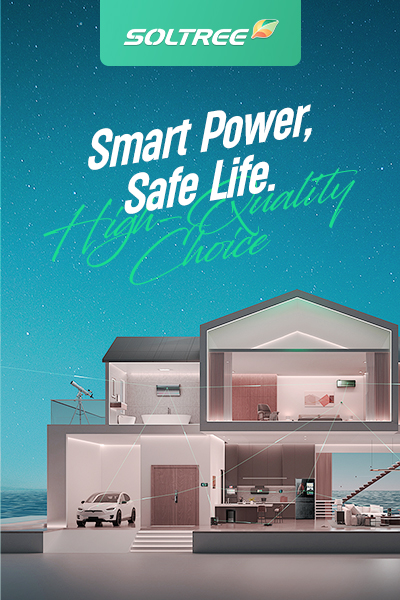Power surges or unpredictable grid voltage can silently harm your devices, which can lead to expensive repairs or even deadly electrical fires.
Surge protectors safeguard against abrupt surges in energy, like lightning, while over/under voltage protectors stop fluctuating grid voltage from causing long-term damage by cutting off unsafe electricity.
People often believe that their appliances are safe as long as they are plugged into the wall. Both quick surges caused by lightning and long-lasting unstable grid voltages can damage equipment or start fires. Choosing the correct protective device relies on your location, the stability of your power source, and the type of dangers you wish to prevent. Let’s review how each protection works, their differences, and how to select which one best meets your needs.
Function of Surge Protectors
Think of a lightning strike landing close to your house and blasting thousands of volts into the wiring in your home in only a few milliseconds.
A surge protector takes in extra energy from abrupt voltage spikes and sends it securely to the ground, protecting delicate electronics from harm.
Surge protectors work alongside the power line and only turn on when there is a surge that could be dangerous. They are rated based on how much current and voltage they can handle. For instance, a 50kA protector makes sure that a lot of lightning energy may be redirected, which keeps linked electronics secure.
Function of Over/Under Voltage Protectors
What if your appliances are exposed to dangerously high or low voltage for hours instead of just one lightning strike?
Over/under voltage protectors keep an eye on grid voltage all the time and cut off the circuit when it goes below or above a safe level. They then restore power when the voltage is stable again.
When the voltage is too high, these devices cut off electricity in series with the circuit. For instance, if they are configured to 160V–255V, they will trip whenever the grid supply goes over certain limits. Some models reset themselves, some combo types need to be reset by hand, like an RCD.
Differences between Surge Protectors and Over/Under Voltage Protectors
Not all electrical risks are the same, and if you don’t know the difference, your equipment could be at risk.
Surge protectors stop lightning from causing sudden spikes, whereas over/under voltage protectors deal with power systems that are unstable and cause long-term abnormal voltage.
A brief comparison can help you understand their roles:
| Feature | Surge Protector | Over/Under Voltage Protector |
|---|---|---|
| Threat type | Lightning, spikes | Long-term high/low voltage |
| Connection | Parallel | Series |
| Response time | Instantaneous | Continuous monitoring |
| Restoration | Automatic | Automatic or manual reset |
How to Choose Protectors
Even if you install the wrong item, your electronics could still fail in ways that are expensive and harmful.
If you reside in a location where lightning strikes often, use surge protectors. If the power grid isn’t very reliable or power outages happen a lot, use over/under voltage protectors.
Your surroundings will help you make the appropriate choice. Surge protectors are very important in rural areas or places where storms happen a lot. Over/under voltage protectors keep appliances safe and stop fires in areas or grid systems that are getting older or have a lot of power interruptions. To be as safe as possible, a lot of electricians say to use both devices at the same time.
Conclusion
Having a circuit breaker is only part of electrical safety; you also need to safeguard your equipment against abrupt lightning strikes and fluctuating voltage levels. Surge protectors work like shields when there are short bursts of explosive energy, while over/under voltage protectors defend against slow, harmful changes in the grid. Choosing the correct protector could save your appliances, keep your family safe, and stop fires, depending on where you live and how well your local electrical infrastructure works. For the best protection, think about putting both devices in place at the same time. This will provide you piece of mind and long-term reliability.



